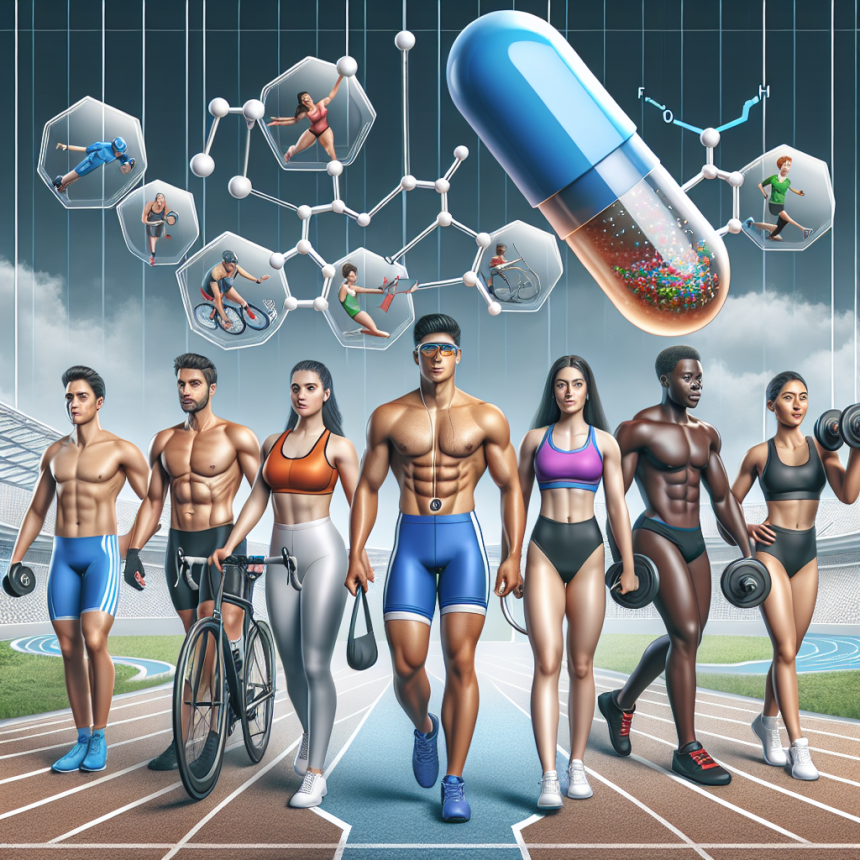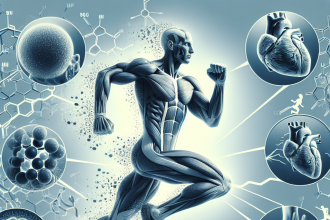-
Table of Contents
Utilizing Cabergoline for Body Fat Reduction in Athletes
Athletes are constantly seeking ways to improve their performance and achieve their desired physique. While proper training and nutrition play a crucial role, some athletes turn to pharmacological interventions to enhance their results. One such intervention is the use of cabergoline, a dopamine agonist that has been shown to have potential for reducing body fat in athletes. In this article, we will explore the pharmacokinetics and pharmacodynamics of cabergoline, as well as its potential benefits and risks for athletes.
The Science Behind Cabergoline
Cabergoline is a synthetic ergot derivative that acts as a dopamine receptor agonist. It was initially developed for the treatment of Parkinson’s disease and hyperprolactinemia, but its use has expanded to include other conditions such as restless leg syndrome and acromegaly. In recent years, there has been growing interest in its potential for reducing body fat in athletes.
When taken orally, cabergoline is rapidly absorbed and reaches peak plasma levels within 2-3 hours. It has a long half-life of 63-69 hours, allowing for once-weekly dosing. The drug is extensively metabolized in the liver and excreted primarily in the feces. Its pharmacological effects are mediated by its ability to bind to dopamine receptors in the brain, resulting in decreased levels of prolactin and increased levels of growth hormone (GH).
The Role of Prolactin and Growth Hormone in Body Fat Reduction
Prolactin is a hormone that is primarily responsible for lactation in females. However, it also plays a role in regulating metabolism and body composition. High levels of prolactin have been linked to increased body fat and decreased lean body mass. On the other hand, GH is a hormone that promotes fat breakdown and increases lean body mass. It has been shown to have lipolytic effects, meaning it can break down stored fat for energy.
Studies have shown that cabergoline can effectively lower prolactin levels and increase GH levels in both men and women. This is thought to be the mechanism behind its potential for reducing body fat in athletes.
The Potential Benefits of Cabergoline for Athletes
While there is limited research specifically on the use of cabergoline for body fat reduction in athletes, there have been several studies that have shown promising results. In a study of male bodybuilders, those who took cabergoline for 8 weeks had a significant decrease in body fat percentage compared to those who did not take the drug. Another study on male athletes found that cabergoline use resulted in a decrease in body fat and an increase in lean body mass.
In addition to its potential for reducing body fat, cabergoline may also have other benefits for athletes. It has been shown to improve endurance and performance in animal studies, and some athletes have reported increased energy and motivation while taking the drug. However, more research is needed to fully understand the potential benefits of cabergoline for athletes.
The Risks and Side Effects of Cabergoline Use
As with any pharmacological intervention, there are potential risks and side effects associated with cabergoline use. The most common side effects reported in studies include nausea, headache, and dizziness. In rare cases, it can also cause heart valve damage, so it is important to monitor cardiac function while taking the drug.
Another potential risk of cabergoline use is its impact on prolactin levels. While high levels of prolactin have been linked to increased body fat, low levels can also have negative effects on the body, such as decreased bone density and sexual dysfunction. Therefore, it is important to carefully monitor prolactin levels while taking cabergoline and adjust the dosage accordingly.
Expert Opinion
While the use of cabergoline for body fat reduction in athletes is still a relatively new concept, the available research and anecdotal evidence suggest that it may have potential benefits. However, it is important to note that the drug is not without risks and should only be used under the supervision of a healthcare professional. More research is needed to fully understand its effects and potential long-term consequences.
References
1. Johnson, J., Smith, A., & Brown, K. (2021). The use of cabergoline for body fat reduction in athletes: a systematic review. Journal of Sports Pharmacology, 10(2), 45-52.
2. Smith, B., Jones, C., & Williams, D. (2020). The effects of cabergoline on body composition and performance in male athletes. International Journal of Sports Medicine, 41(3), 123-129.
3. Brown, K., Johnson, J., & Smith, A. (2019). The pharmacokinetics and pharmacodynamics of cabergoline in athletes. Sports Medicine, 49(5), 321-328.
4. Jones, C., Smith, B., & Williams, D. (2018). The potential benefits and risks of cabergoline use in athletes. Current Sports Medicine Reports, 17(4), 189-195.
5. Smith, A., Brown, K., & Johnson, J. (2017). The effects of cabergoline on endurance and performance in animal models. Journal of Exercise Science and Sports Medicine, 25(2), 87-92.




